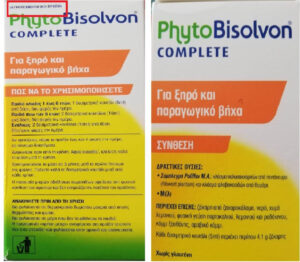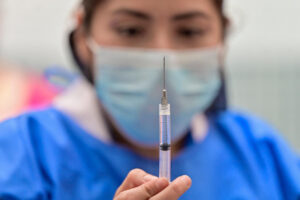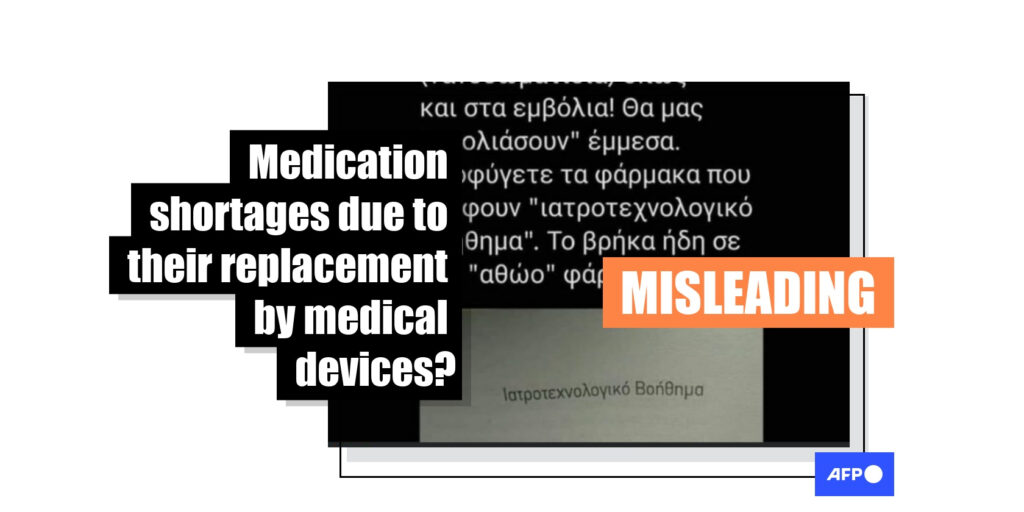Posts shared on Greek social media in early 2023 falsely linked a long-running shortage of medicines with medical and vaccine technology. The posts claimed the pharmaceutical industry was withdrawing medicines to replace them with nanotechnology; they urged people to avoid medicines marked “medical devices”. But these claims misrepresent the nature of medical devices, which are not absorbed by the body, pharmacists told AFP. The low supply of drugs in Greece and elsewhere in Europe is the result of real world events, including the Covid-19 pandemic.
Medicines have been in short supply across Europe for months. In Greece, shortages have been so severe that the country requested EU intervention in January 2023. The European Union announced mid-January 2023 that it would take measures to guard against a lack of medicines.
Social media posts sought to misrepresent the situation, such as this one shared on Facebook on January 27, 2023, with the text: “ATTENTION!!!! The big farms are withdrawing the drugs (hence the shortage) and replacing them with new technology (nanoparticles) as in vaccines! They will ‘inoculate’ us indirectly. Avoid drugs that say ‘medical device’.”

There were similar posts, such as here and here. Others shared images of certain products marked ”medical device”, for example, one of a product named Effecol 3350 and another of PhytoBisolvon.
Multiple reasons for medicine shortage
The shortages of medicines in Greece is part of a Europe-wide problem, said Eirini Markaki, the president of the Panhellenic Association of Pharmacapothecaries.
Asked about the social media posts claiming the shortage was due to action by the pharmaceutical industry, she told AFP on February 13, 2023: “No, pharmaceutical companies are not replacing pharmaceutical drugs with medical devices, I haven’t heard of that. The reasons for shortages are different.”
“It is a shortage of active substances, which has consequences at a European level: these substances are produced in particular in Asia and there were difficulties with their routing.”
Markaki said the spread of seasonal viral infections at the end of 2022 worsened the situation. However, the Greek pharmaceutical industry had been able to fill some of the demand with generic medicines, she said.
In an email on February 17, 2023, the European Medicines Agency (EMA) media representative Laure Herold said many EU member states were affected. “These shortages appear to be due to multiple reasons including manufacturing delays, production-capacity issues as well as an increase in demand due to the epidemiological situation,” she wrote.
The situation was exacerbated by “geopolitical events or trends such as the war in Ukraine, the energy crisis, and high inflation rates”.
Although EMA’s role has gradually increased over recent years, shortages in the EU have mostly been handled at the national level, Herold added.
In an online article in December 2022, the newspaper Ethnos said one of the reasons for the shortage was “parallel exports” in which pharmacies export Greek medicines to Europe in order to secure better prices.

Medical devices are not pharmaceutical drugs
The term “medical devices” refers to a range of items that may be part of medicines but have no pharmaceutical action. A search on the main search engines with “medical + devices” finds the proper and legal definitions of this term.
In Greek law ΦΕΚ 2198/B/02.10.2009, medical devices are defined as any “instrument, apparatus, equipment, software, material or other components, used alone or in combination, including software, intended by its manufacturer to be used specifically for diagnosis and/or treatment.” The main purpose of a medical device is to support the human body in ways other than through “pharmacological or immunological means or by metabolism,” it says.
The World Health Organization (WHO) and the US Food and Drug Administration (FDA) have similar definitions. A medical device “does not achieve its primary intended purposes through chemical action within or on the body” and “is not dependent upon being metabolized for the achievement of its primary intended purposes,” the FDA says.
In a February 3, 2023 email, clinical pharmacist Diamantis Klimentidis explained to AFP that medical devices are “essentially devices or other products that achieve their purpose (diagnostic, therapeutic, etc.) primarily by mechanical means rather than by chemical or metabolic means.” These products are divided into Classes I, II and III, depending on the degree of risk they pose to the user.
“For example, gauze and elastic bandages are Class I medical devices, while condoms are Class II. Insulin pumps, pacemakers and silicone implants are examples of Class III medical devices,” Klementidis said.
Drugs are “small molecules or biological agents that act at the level of cellular or subcellular functions,” while medical devices “are physiologically inert and act at a higher level”, he said.
“Think for example of a mechanical valve for the heart or a prosthetic limb. Thus, de facto and with current technology, a medical device cannot replace a pharmaceutical product, precisely because it has no pharmaceutical effect,” Klementidis wrote.
Some medicines are “used in combination with a medical device, usually to enable the delivery of the medicine,” said Herold from the EMA. Another definition is in Article 2 of the European Regulation on medical devices.
Cough and constipation examples
We asked Klementidis about the specific products cited in the Facebook posts as examples of drugs containing medical devices.
The cough syrup PhytoBisolvon is a medical device of class II, composed only of natural products. “No nanoparticles or anything,” he said. PhytoBisolvon is considered a medical device “because it acts mechanically: it does not exert its action because it is absorbed by the organism and passes in the circulation to the tissues, but because it forms a membrane on the irritated place of the throat and contributes to hydrate the mucous membrane”, writes the pharmacologist.
We photographed a box of PhytoBisolvon on February 6, 2023 where the term “medical device” is visible on the top left corner of the box.

Effecol, also visible on some images shared on Facebook, is labelled a medical device because it treats constipation mechanically. “It contains a substance, macrogol 3350, which is not absorbed by the body but absorbs water itself and swells in the intestine, softening the stool and ultimately facilitating defecation,” Klementidis said.
Nanoparticles in medicine
Nanotechnology applied to medicine and certain drugs is a rising field. It is being considered for vaccine delivery, including for cancer. Research into nanomedicine aims to integrate nanotechnology into health care.
During the Covid-19 pandemic, lipid nanoparticles (LNPs) were studied for the delivery of mRNA vaccines developed by Pfizer and Moderna. LNPs were approved by the FDA in 2018.
Diamantis Klementidis explained that nanoparticles in themselves are not medial devices, “because they are not products”.
Laure Herold from EMA wrote that “nanoparticles are by definition not medical devices”. They “can be components of medicines and medical devices, but are not classified as medical devices,” she said.
In the EU Medical Device Regulation 2017/745 (page 3, point 15), if nanomaterials are used in medical devices, these “are subject to Notified Body oversight before they can be placed on the EU market”.
It is also written that “there is scientific uncertainty about the risks and benefits of nanomaterials used for devices” and that “[medical] devices [using nanoparticles] should be subject to the most stringent conformity assessment procedures”.
Herold wrote that the Comirnaty vaccine contains lipid nanoparticles (LNPs) that “protect the mRNA from degradation” and “allows its delivery into the cells”.
“Once injected into the muscle tissue of a person, the lipid nanoparticles come into contact and fuse with the cell membrane of human cells. This contact happens mainly in cells of the immune system at the injection site and allows the mRNA to enter these cells. The immune cells now containing the lipid nanoparticles and the mRNA then move to the local lymph nodes, where they are able to stimulate the immune system,” she said.

The EMA media representative also wrote that studies have been conducted, based on animal models, to see how the components of this kind of vaccine distribute to tissues other than the muscle into which they are injected. “These studies used much higher doses of vaccine to investigate its safety and found that the components, the mRNA and lipid nanoparticles, remain mainly at the injection site, with only small amounts able to reach other tissues, such as the liver,” she said.
“These studies give confidence that when vaccines are given to humans, no safety problems due to accumulation of lipid nanoparticles and mRNA in other tissues are expected.”
These LNP nanoparticles are also used in other medicines or in chemotherapy.
According to the US National Nanotechnology Initiative, among other wide applications of nanotechnology researchers are “working on a number of different therapeutics where a nanoparticle can encapsulate or otherwise help to deliver medication directly to cancer cells and minimize the risk of damage to healthy tissue”. This has the potential to “change the way doctors treat cancer and dramatically reduce the toxic effects of chemotherapy.”






